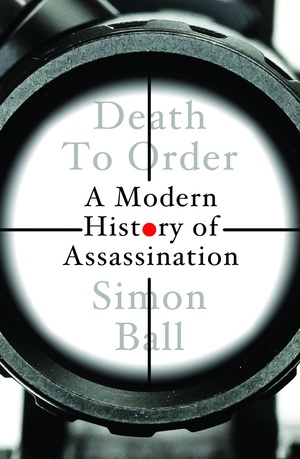Simon Ball Death to Order: A Modern History of Assassination Yale University Press 464 pages, 6 x 9 inches, ISBN 9780300258042
In a Nutshell
Death to Order is an analytical history of assassination between 1914 and 2024, one-hundred-and-ten years.
Death to Order sets out to convince the reader, with a mass of archival evidence drawn from around the world, that modern assassination (i.e., since 1914) has been, and is, fundamentally a phenomenon related to states. That is not to say that states were always behind assassination – although they sometimes were – but rather that the reaction of states, and particularly great powers, to assassination has given modern political murder its potent charge.
Secondly, Death to Order shows that the changes assassination wrought in democracies were subtle but identifiable in the archives. One must always acknowledge that available evidence on assassination is both complex and fractured and needs to be unravelled with care; however, this can be done by the application of proper historical research.
The wide angle
The study of assassination is akin to running a razor blade down the history of international politics: the cut is narrow but long and deep. Assassination reveals statesmen and their servants at their most authentically vulnerable moments – they are, after all, often the people with the most to lose. Assassination: personal, violent, widely reported, strips back layers of self-deception like few other acts.
My own study of assassination started, as historical research should, with curiosity occasioned by a different project. I was researching the attempts by Britain to limit the international trade in small arms from the Edwardian period to the twenty-first century when I came across this statement: semi-automatic pistols were ‘devilish weapons’ because ‘any fool can shoot a Viceroy or a police inspector.’ I wondered if they could, and thus the trail started winding through many hundreds of assassinations.
A close-up
When he rides from one place to another, it is in an armored car, preceded and followed by armored cars filled with soldiers. He travels at a high rate of speed along a route guarded by rows of police.
That could be a description of nearly any political leader today. It is, in fact, drawn from an account of the security arrangements for President Machado of Cuba in 1930, who Western commentators portrayed as dictatorial, cowed, and paranoid.
Like any good introduction, the introduction tells the reader about the book and its arguments. However, as an alternative, I’d direct the browser to the beginning of chapter 10, which reads: ‘For the West, the assassination world shifted most profoundly in the 1980s. Faced with an increasing number of assassination conspiracies, the western political elite changed its own status, way of living, and structural relationship with other citizens.’ Anyone interested in this idea should like the book.
Lastly
I’d be very satisfied if Death to Order convinces writers, journalists, and readers to give up on counter-factual speculation about assassination. Assassinations have observable effects: our time is more fruitfully spent on those effects rather than fantastical non-happenings.





